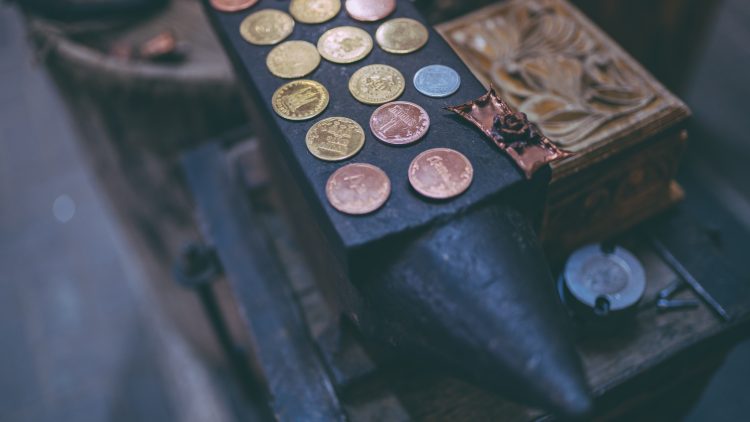Money, especially coinage, has been an important part of society for thousands of years. We use it to buy various commodities on a daily basis or simply as a collectible, but how governments are manufacturing them?

Coinage metals
Every coin has its own specifics and therefore requires different materials in its manufacturing process.
Euros that are intended for circulation are usually made of copper-coated steel for one, two and five-cent coins, and made of copper, zinc and aluminium for ten, twenty and fifty-cent coins. For bi-metallic coins, we use nickel, copper and zinc for one-euro coins, while for two-euro coins we use nickel and copper.
Manufacturing process
Each country has its own national institution responsible for producing currency. In France, it is the Monnaie de Paris (Paris Mint) which carries out the duty of manufacturing the French euro. Its plant in Pessac, near Bordeaux, produces about 800 million circulating coins each year.
The process and workmanship required is quite long. Engravers must first create the design by hand or computer. Once they have the final design, it takes about two months to release the first coins, and then another two months to produce them in large quantities.
In the workshops, engravers take large metal, steel or copper strips and cut round blanks in it (planchets). They then engrave the drawing into a jig (device that holds a piece of work and guides the tool operating on it) made of brass, an alloy of copper and zinc very malleable.
Subsequently the planchets go into the coining presses where they are stamped with the designs and inscriptions. Upper and lower dies trample the design on both angles of the coin at the same time. It’s rather fast, in the Pessac plant the machine can coin about 800 blanks per minute. Ultimately, the coins go into a polisher to make them shiny.
Once the manufacturing process is complete, the factory gather and package the coins. Afterwards, they will be sent to central banks and other monetary institutions.
Collectible coins
The Monnaie de Paris also manufactures and sells collector coins, medals, jewelry, pieces of art and some circulation foreign currency. It produces approximately 300,000 items per year.
Some commemorative coins that feature for example the Treaty of Rome, the European flag or World AIDS Day can usually be found in large quantities and are easily obtainable.
The Monnaie de Paris also issues other coins, made of precious metals, which are limited. For example, every year it issues solid gold coins with an engraving of the Marianne, worth between 1000 and 5000 euros each. Those collectibles can become investment items.
Other collectibles depict important themes or individuals. Some collections are featuring famous women in France, important events in human history or UNESCO World Heritage Sites. The price of some of those coins exceeds 2000 euros.
Finally, for the wealthiest, the Monnaie de Paris combines its know-how with luxury houses every year to design exceptional gold coins adorned with diamonds whose price can go up to 130,000 euros.
Come and check our website Millenium State!

